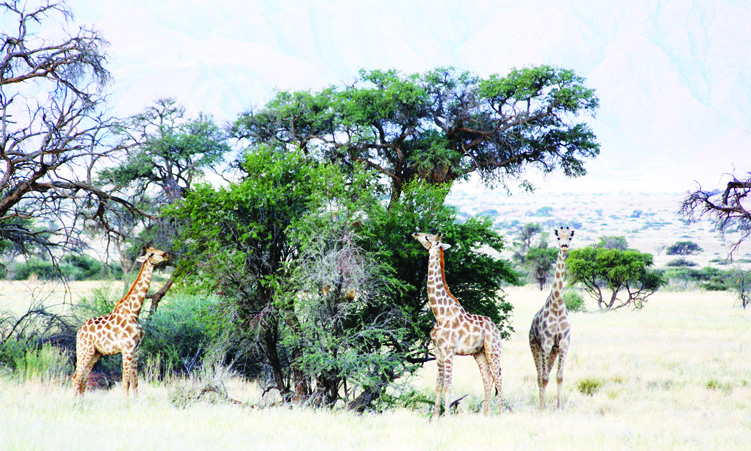In 1760, in southern Namibia, a European traveller named Jacobus Coetsé Jansz encountered an animal he struggled to classify.
He described it as: “An animal, not quite as large as an elephant, but rather tall in body, with a long neck, humped back and high legs, resembling a type of camel, though not the proper one.” (Moritz, p16)
This was his first encounter with a giraffe, an animal unfamiliar to him. His description likely influenced the Afrikaans name for giraffe – kameelperd, which literally means ‘camel horse’.
Jansz, a Dutch-descended settler from Piketberg Mountain in the Western Cape, ventured into Greater Namaqualand (southern Namibia) during his elephant hunting expeditions, reaching as far as Warmbad in present-day Namibia. It is believed he was the first European to cross the Gariep (Orange) River from the south.
During one of his hunts, Jansz shot two adult giraffes, both female and tried to capture a calf to take home. He fed it bread soaked in water, but unfortunately, the young giraffe died after two weeks. Jansz skinned it and returned to the Cape with the skin.
Upon his return, he shared his tales not only about the peculiar ‘camel’, but also about another remarkable discovery: a unique tree. He described it as having an “extremely beautiful red-coloured core and innermost wood, with branches bearing large clover-like leaves, yellow flowers, and a pod-type fruit”. (Moritz, p17)
This tree’s leaves and flowers were favoured by giraffes, which likely led to its name – the camel thorn tree, or kameeldoring boom in Afrikaans.
Despite the tree’s formidable thorns, giraffes manage to graze on it with ease. Using their tongues, which can reach up to 50cm, they wrap around twigs and carefully strip off the leaves. Due to their method of feeding, giraffes spend up to 20 hours a day consuming their required 30kg of food.
And thus, the iconic camel thorn tree got its name from its association with the giraffe, an animal once thought to resemble a camel.
Today, this remarkable tree, with its unusual name, can still be seen standing proudly across the Namibian landscape, playing a vital role in its ecosystem, while serving as a symbol of the country’s unique natural heritage.
Stay informed with The Namibian – your source for credible journalism. Get in-depth reporting and opinions for
only N$85 a month. Invest in journalism, invest in democracy –
Subscribe Now!










